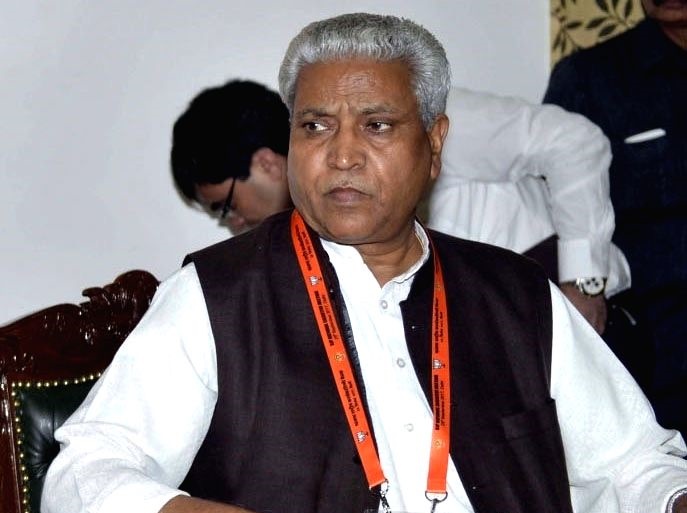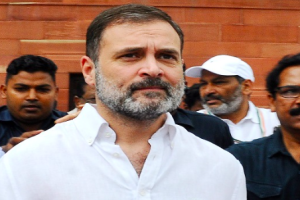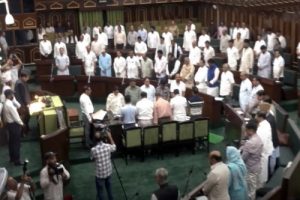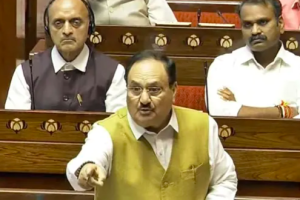As Lok Sabha elections near, the post of “Sangathan Mahamantri” (General Secretaries (Organisation)) becomes increasingly important in the BJP. The incumbent is a key political link with partys ideological mentor RSS and carries out coordination at various levels.
He is assisted by five Joint General Secretaries (Organisation) at the national level. The same hierarchy is followed in state Bharatiya Janata Party (BJP) units. There is one General Secretary (Organisation) with two or three Joint General Secretaries (Organisation) in every state unit of BJP.
The post of General Secretary (Organisation) in BJP is held by a “pracharak” deputed by the Rashtriya Swayamesvak Sangh who acts as a bridge between the two organisations.
The post is powerful and the person holding it is regarded a notch above other general secretaries in terms of influence.
While other party office-bearers including the party president, vice-presidents, general secretaries, secretaries and spokespersons have a public profile and engage with the media, the General Secretary (Organisation) is largely a backroom commander dedicated to party work, identifies organisational gaps, gives grassroots feedback and stays away from limelight.
Sources said that General Secretary (Organisation) is answerable to RSS and apparently not as much to the BJP chief and gets his brief from the Sangh.
On directions of general secretary (organisation), the foot soldiers RSS carry out the assigned roles for victory of BJP candidates. The post also serves as a check to ensure that BJP leaders do not deviate from core principles of the Sangh.
The post of General Secretary (Organisation) in BJP is at present held by Ramlal. Under him, there are four Joint General Secretaries (Organisation). They are V. Satish, Saudan Singh, Shiv Prakash and B. L Santhosh.
Ramlal: He is the longest serving BJP general secretary (Organisation). Known for his organisational skills, he coordinates with the RSS, maintains the cadres and works to keep the primacy of ideology. The post in the past has been held by leaders like Sundar Singh Bhandari, K. N. Govindacharya, Prime Minister Narendra Modi and Sanjay Joshi.
A “pracharak” from the western Uttar Pradesh, Ram Lal replaced Sanjay Joshi in the post in 2006.
The significance of the post can be understood from an instance. When a controversy broke out in 2004 over BJP leader L. K.’Advani’s remarks on M A Jinnah, the RSS exerted pressure on him to resign. But he was adamant.
There was no one in the BJP to propose his resignation at the core committee meeting. The resignation proposal was given by Sanjay Joshi, who was then on the post that Ramlal is holding now. Advani had to resign as party chief.
Ramlal is considered rooted to the ground, takes organisational meetings routinely, gives feedback to top party leaders and the state units informed about party’s various programmes.
He is regarded as the voice of the party cadres and addresses their grievances. He also steps in if there are differences between senior leaders.
V. Satish: He is “Sangathan Mantri” (Joint General Secretary (Organisation))” and in-charge of the west zone (Rajasthan, Gujarat, Maharashtra) besides Andhra Pradesh. A full-time RSS worker, he is focusing on the four crucial states in the Lok Sabha elections. Born in Nagpur, he worked in northeastern states for ABVP and RSS before being shifted to BJP’s Assam unit.
He has also worked in Gujarat and is considered close to Prime Minister Narendra Modi, BJP chief Amit Shah apart from RSS leader Dattatreya Hosabale.
Shiv Prakash: He is looking after organisational affairs primarily in West Bengal and also in Western Uttar Pradesh and Uttarakhand.
He worked closely with Shah in 2014 Lok Sabha polls and was promoted for his work. Under his guidance, the BJP improved its vote share in the last West Bengal Assembly polls and reached double digits. He is working behind the scenes in working out social combinations, ironing out organisational glitches and keeping the BJP’s election machine running efficiently in the three states. He played a key role in West Bengal by appointing teams from booth level to district level. He apparently batted for appointment of Dilip Ghosh as the West Bengal BJP chief.
Saudan Singh: He is in-charge of Chhattisgarh, Odisha and Jharkhand and is credited with BJP’s past victories in Chhattisgarh. Singh is presently busy in Odisha, where the party is striving hard to improve its performance by strengthening party structures. Considered close to senior RSS functionary Suresh Soni, Singh, who hails from Madhya Pradesh, has always stayed away from the media. BJP’s performance in the three states in crucial and his work will be closely watched.
B.L. Santhosh: A chemical engineering graduate, Santhosh is looking after BJP affairs in south India. Known for organisational skills, he adopts latest communication technologies for increasing party’s strength. The initiative of getting volunteers from various professions to take a sabbatical and work for the party, prior to the 2014 Lok Sabha elections, was said to be his brainchild.
Santhosh hails from Shivamogga in Karnataka and apparently has not the best of equations with party veteran B.S. Yeddiyurappa. He played a key role in the backroom operations in the 2008 assembly polls when the BJP came to power in the state.
Santhosh has been visiting the southern states to review the party’s Lok Sabha poll preparation.
























